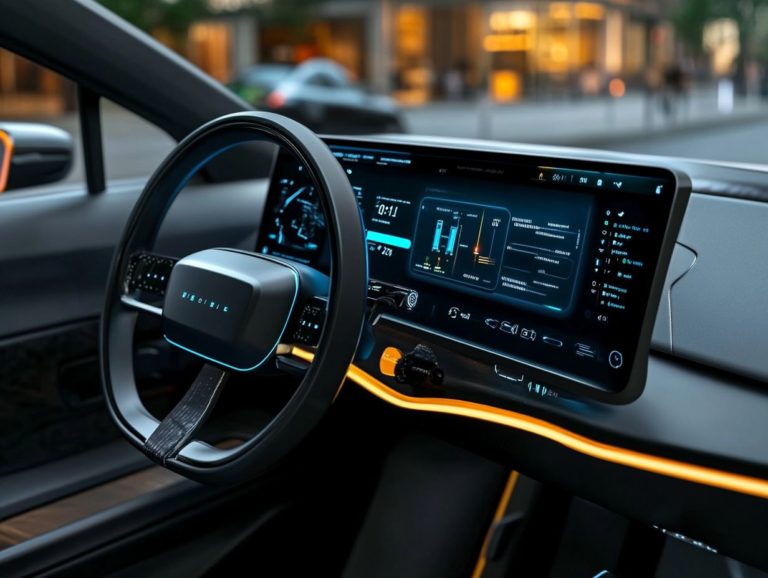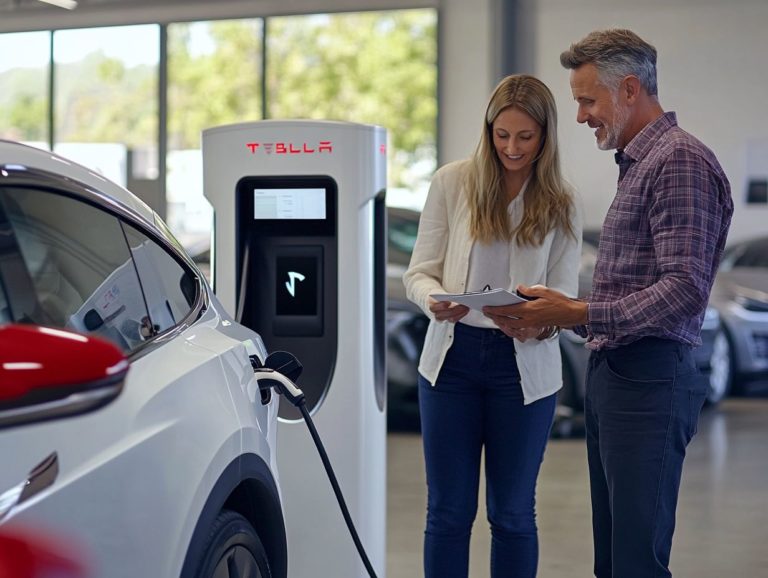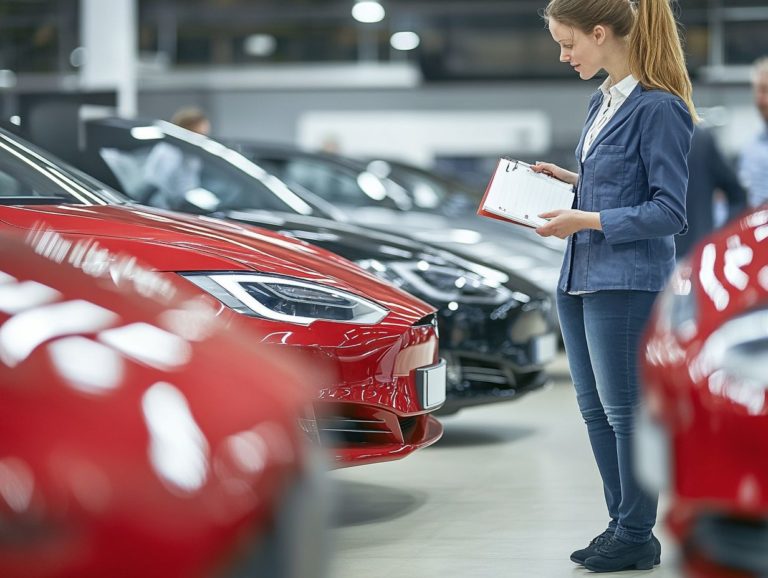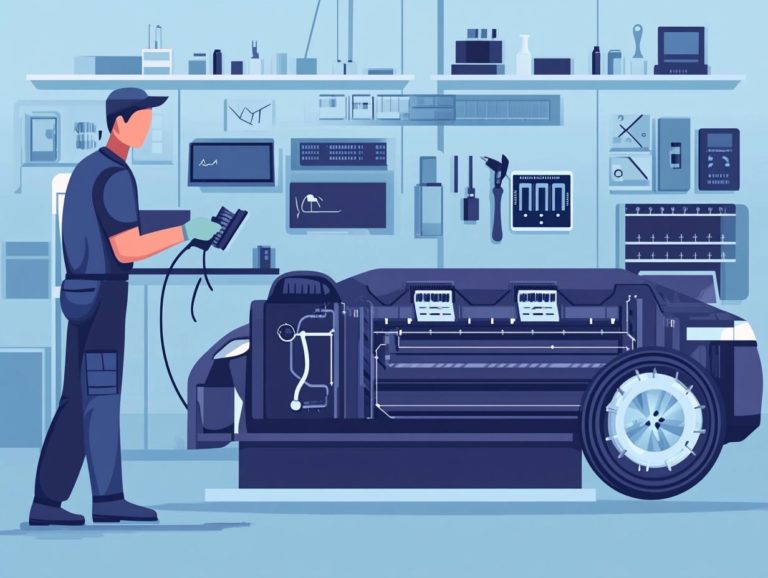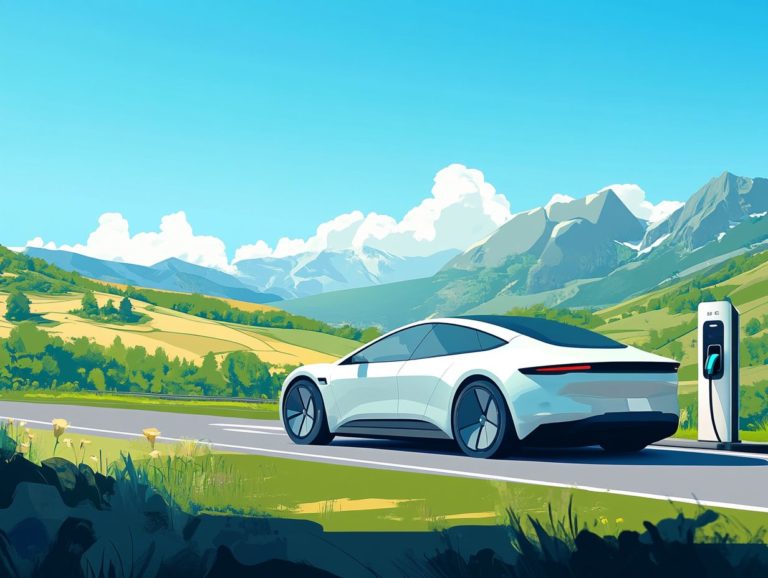how do i charge an electric vehicle at home?
Charging your electric vehicle (EV) at home isn’t just a matter of convenience; it presents a host of advantages that can elevate your overall EV experience.
By exploring the various charging options available such as Level 1, Level 2, and DC Fast Charging you’ll be well-equipped to set up your own home charging station. This guide offers essential insights tailored for you.
You’ll discover a step-by-step process for home charging, along with tips to maximize battery life and save on costs. Plus, you’ll find practical advice for troubleshooting common issues.
Whether you’re just beginning your EV journey or seeking to refine your charging routine, this guide is here to assist you every step of the way!
Contents
- Key Takeaways:
- Types of Charging for Electric Vehicles
- Setting Up a Home Charging Station
- How to Charge an Electric Vehicle at Home
- Tips for Efficient Charging
- Common Concerns and Troubleshooting
- Frequently Asked Questions
- Can I charge an electric vehicle at home?
- What equipment do I need to charge an electric vehicle at home?
- How do I choose the right charging station for my electric vehicle?
- Can I install a charging station at home by myself?
- How long does it take to charge an electric vehicle at home?
- Are there any government incentives for installing a charging station at home?
Key Takeaways:

Charging at home is convenient and cost-effective for electric vehicle owners. There are three types of charging options for electric vehicles: Level 1, Level 2, and DC Fast Charging. To set up a home charging station, you’ll need the necessary equipment and follow a simple installation process. For more details, check out this guide on how to choose the right EV charger for your home.
Why Charge at Home?
Charging your electric car at home provides unparalleled convenience and leads to substantial savings on energy costs.
As more electric vehicle drivers especially in regions like California and cities such as San Jose embrace the shift to electric cars, grasping the advantages of home charging becomes essential.
This setup frees you from the hassle of searching for public chargers! You can seamlessly weave the charging process into your daily routine.
By investing in a Level 2 home charging station, you can significantly reduce your electricity expenses while enjoying the flexibility of charging at your own pace.
With the option of lower electricity rates during certain times of the day, you may benefit from reduced rates during off-peak hours, leading to even greater savings.
This consistent charging schedule brings peace of mind and perfectly aligns with the lifestyle of today s electric vehicle drivers, ensuring a smoother and more hassle-free driving experience.
Types of Charging for Electric Vehicles
Understanding the different charging options available for electric vehicles is essential for maximizing both efficiency and convenience.
As an electric vehicle owner, you have a range of choices at your disposal: from Level 1 and Level 2 home charging to public charging stations equipped with fast charging technologies like CHAdeMO and CCS.
This knowledge enables you to select the charging speed that best suits your needs, ensuring your electric vehicle is always primed and ready for the journey ahead.
Level 1 Charging
Level 1 charging is the most straightforward option for electric car owners, tapping into a standard 120-volt outlet that you probably have in your home.
While this method offers convenience and requires no special equipment, the charging speed is on the slower side, typically adding just a few miles of range per hour. This makes it more suited for overnight charging rather than quick top-ups.
Grasping the limitations of Level 1 charging is essential for effective home energy management. This charging solution is perfect for those of you who drive shorter distances each day, like commuters or people with predictable routes.
Plugging into a regular outlet at night offers a simple, hassle-free way to keep your vehicle powered up.
However, for families or professionals who often journey longer distances, relying solely on Level 1 charging can be less than ideal. That s why it s wise to incorporate this option into a broader home charging strategy.
Balancing Level 1 with faster charging solutions ensures that you meet your unique lifestyle needs while optimizing your home energy use.
Start setting up your home charging station today for a smoother EV experience!
Level 2 Charging
Level 2 charging presents a remarkable enhancement in charging speed compared to Level 1. It harnesses a 240-volt outlet along with specialized charging equipment, such as an Electric Vehicle Supply Equipment (EVSE) cable.
This home charging option can restore your electric vehicle’s battery in just a few hours. It is an ideal solution for daily drivers seeking efficient and dependable charging.
With the right setup, you can ensure your vehicle is always ready to hit the road whenever you are.
Beyond the advantage of speed, installing a Level 2 charging station at home offers great convenience. You can charge your vehicle overnight or during off-peak hours, saving you time and reducing the need for frequent stops at public charging stations.
While it’s wise to consider the potential installation costs varying based on your home s electrical capacity many find that the investment pays off rapidly through fuel savings and enhanced operational efficiency.
You might qualify for rebates or tax incentives. This makes the upgrade even more appealing. A professional installation by a qualified electrician ensures not only safety but also optimal performance, maximizing the benefits of your new charging station.
DC Fast Charging
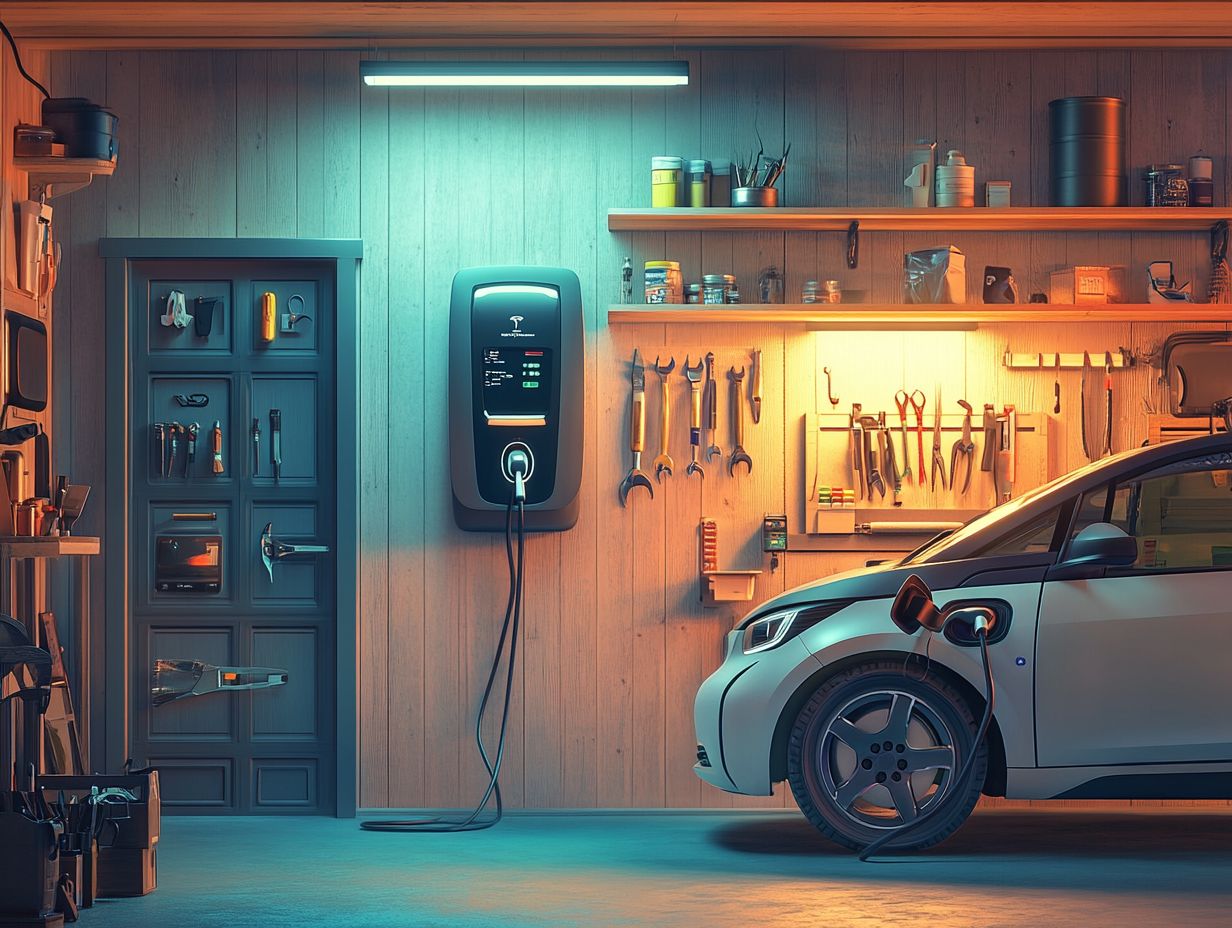
DC Fast Charging is a groundbreaking technology that allows you to charge your electric vehicle rapidly, often in less than an hour. This public charging option leverages advanced infrastructure and is compatible with various charging protocols, including Tesla’s connector, CHAdeMO, and CCS.
The integration of these standards creates a more inclusive environment for EV users like you. It gives you access to a broader range of charging stations.
As major automotive manufacturers invest in DC Fast Charging capabilities, the infrastructure is evolving. Government initiatives and private partnerships bolster this growth.
This collaboration will increase the number of charging points, ensuring that no region is left behind in the shift toward electric mobility. In the years ahead, you can look forward to enhanced charging speeds and improved technologies, which will further reduce wait times and elevate your overall travel experience as an electric vehicle owner.
Setting Up a Home Charging Station
Establishing a home charging station is a crucial move for electric vehicle owners looking to maximize their charging capabilities and convenience.
By carefully selecting the right charging equipment and following installation guidelines paying special attention to the Tesla connector and the proper setup of the EVSE cable you can ensure your electric car charges efficiently and safely right at home.
This proactive strategy not only saves valuable time but also elevates your overall charging experience.
Equipment and Installation Process
The essentials for setting up a home charging station include a dedicated charging unit, the right EVSE cable, and possibly the installation of a 240-volt outlet.
Regarding installation, you can engage a professional electrician or tackle it yourself with guided instructions, depending on your comfort level. Proper installation is crucial for ensuring safety and optimal charging performance both vital for an efficient home charging experience.
Beyond the primary equipment, it’s wise to consider any necessary mounting hardware and circuit breakers to prevent overloading your system. If you choose the DIY route, familiarize yourself with local electrical codes and regulations to ensure compliance and reduce potential hazards.
Don t forget about safety features like surge protectors and weatherproof enclosures for outdoor installations.
A comprehensive assessment of your home’s electrical capacity is crucial. It ensures seamless integration with your existing appliances while minimizing the risk of electrical issues.
How to Charge an Electric Vehicle at Home
Charging your electric vehicle at home is a seamless experience. It enables you to simply plug in your car overnight or during the day while reaping the rewards of lower energy costs. For more information on how to install a home EV charging station, check out the detailed guide.
By adhering to the charging process and using the right charging station, you can effortlessly manage your battery charge. This ensures your vehicle is always ready for your daily journeys.
This approach not only saves you valuable time but also highlights the numerous advantages of home charging compared to public alternatives.
Get started on your charging station today for a hassle-free electric vehicle experience!
Step-by-Step Guide
A step-by-step guide to charging your electric vehicle at home starts with selecting the optimal time typically overnight to take advantage of the best energy costs.
Begin by connecting your vehicle to the home charging station using the appropriate EVSE cable. Ensure it fits snugly.
As you monitor the charging process, you’ll track your battery charge and remain aware of the charging speed.
Familiarize yourself with the various charging options, such as Level 1 and Level 2 chargers. These differ in speed and installation requirements.
For maximum efficiency, schedule your charging during off-peak hours when electricity rates are lower. Avoid times when demand is high.
If your system supports it, use smart charging features that provide notifications and optimize energy usage.
Be vigilant about potential pitfalls. Relying on third-party chargers that may not be compatible with your vehicle or neglecting regular maintenance can impact efficiency and safety.
Tips for Efficient Charging
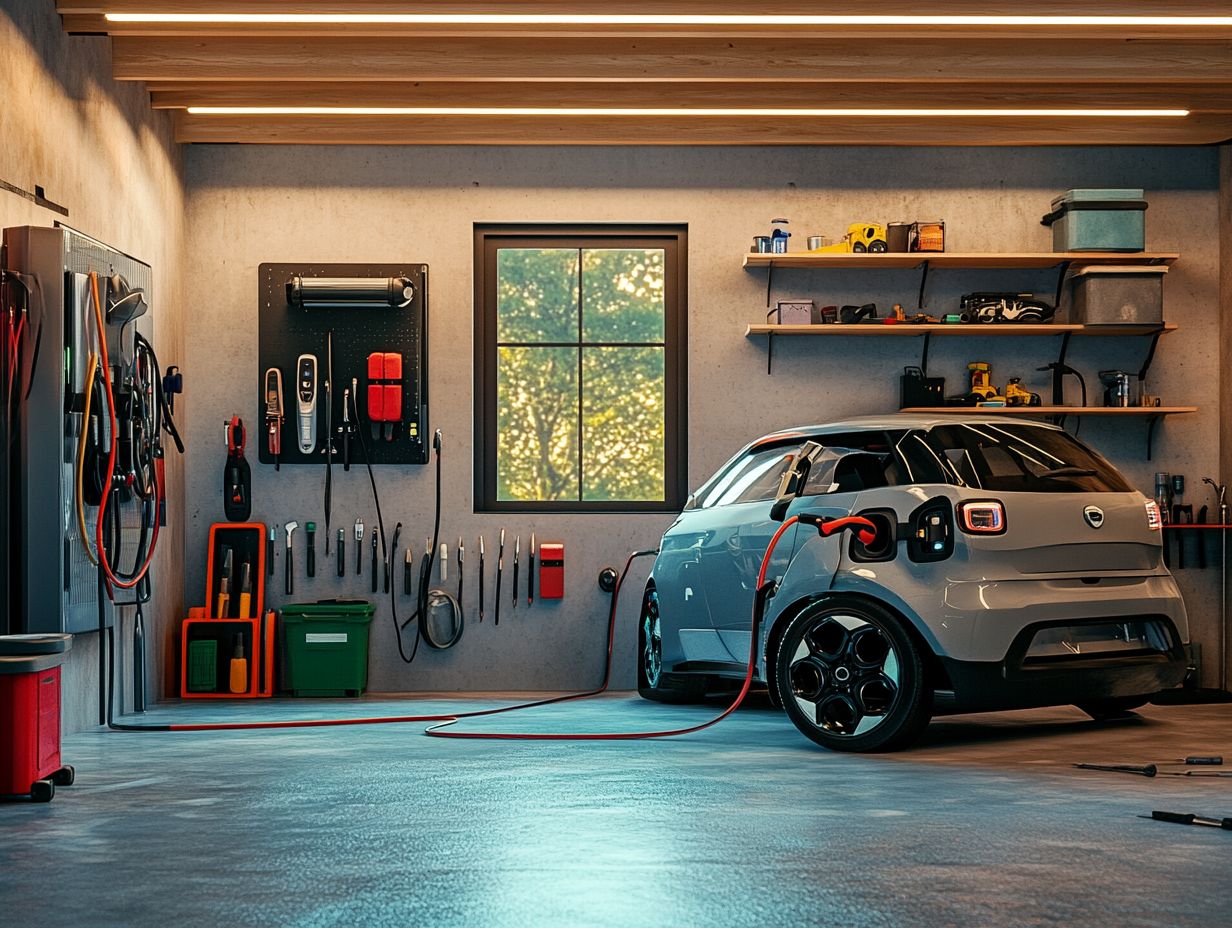
To ensure efficient charging of your electric vehicle, adopt best practices that enhance both charging speed and battery longevity.
Utilize a smart home charger and explore options like the Economy 7 tariff. You can achieve substantial savings on energy costs.
By taking a proactive approach, optimize your EV’s performance and extend its lifespan. This ensures it serves you well for years to come.
Maximizing Battery Life and Cost Savings
Maximizing your electric vehicle’s battery life while managing energy costs is essential for getting the most out of your investment.
Employ strategies like maintaining optimal charging speeds, using a smart home charger, and scheduling home charging during off-peak hours. This significantly cuts down on expenses and prolongs your battery’s health.
These practices enhance your vehicle’s performance and promote a sustainable driving experience.
Keep your tires properly inflated and maintain your vehicle regularly for improved efficiency and reduced energy consumption.
Consider using regenerative braking techniques, which recapture energy during stops and minimize wear on the battery. Minimize excessive acceleration and maintain a consistent driving speed to enhance your overall range.
By adopting these practical strategies, save money while extending your battery’s longevity. This leads to a more economical and environmentally friendly journey.
Common Concerns and Troubleshooting
As an electric car driver, you may grapple with common concerns like range anxiety and the efficiency of available charging options.
Familiarize yourself with troubleshooting techniques for charging issues and identify the best public charging stations. This can significantly alleviate these worries.
By tackling these challenges, enjoy a seamless driving experience free from the stress of unexpectedly running out of battery.
Addressing Range Anxiety and Other Issues
Addressing range anxiety is crucial for electric vehicle drivers. The fear of running out of battery can undermine your confidence in EV ownership.
Understanding the available charging options like public charging stations and fast charging provides reassurance. Being prepared with troubleshooting strategies helps mitigate potential issues during travel.
Plan your charging routes in advance using detailed maps to pinpoint optimal recharging locations.
Various smartphone apps help you locate nearby charging stations and monitor their availability in real time.
Familiarize yourself with common charging problems, such as connection issues or software glitches. This enables you to navigate any hiccups with ease.
Stay informed and use these techniques to embark on longer journeys without the constant worry of depleting your battery.
Frequently Asked Questions
Can I charge an electric vehicle at home?
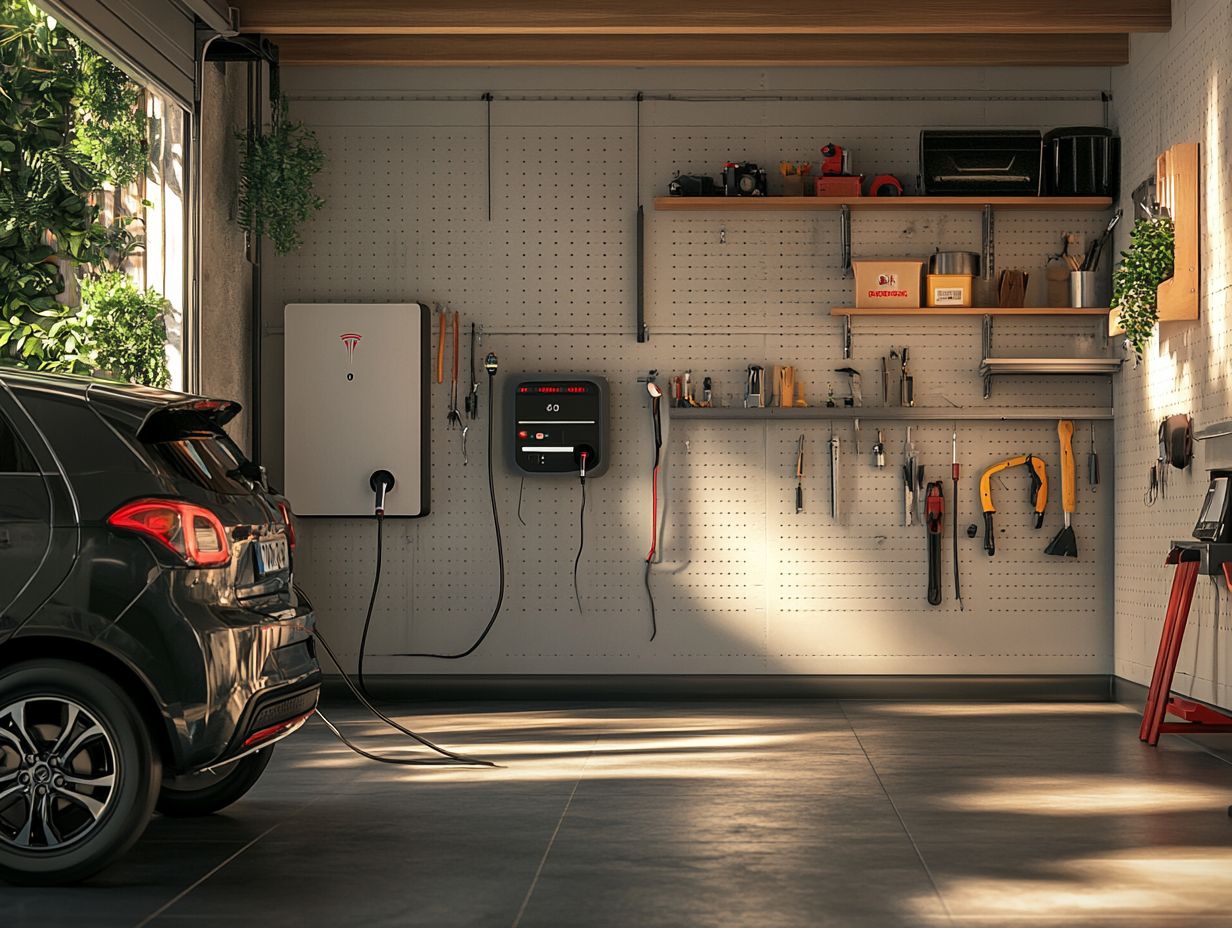
Yes, you can charge an electric vehicle at home. You can use a dedicated charging station or a regular household outlet.
What equipment do I need to charge an electric vehicle at home?
You need a charging station, also called electric vehicle supply equipment (EVSE). You can buy this and level 1 or level 2 charging cables from manufacturers or third-party vendors.
How do I choose the right charging station for my electric vehicle?
Start by determining the charging speed you need. Then consider compatibility, safety features, and cost when selecting your charging station.
Can I install a charging station at home by myself?
Have a licensed electrician install the charging station. This ensures it is done safely and correctly.
How long does it take to charge an electric vehicle at home?
Charging time varies based on the charger type and your vehicle’s battery size. On average, a level 2 charger takes about 8-12 hours, while a level 1 charger can take up to 20 hours.
Are there any government incentives for installing a charging station at home?
Great news! Some states and local governments provide awesome incentives, rebates, or tax credits for installing a home charging station. This makes it more affordable for electric vehicle owners.

